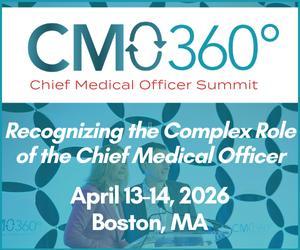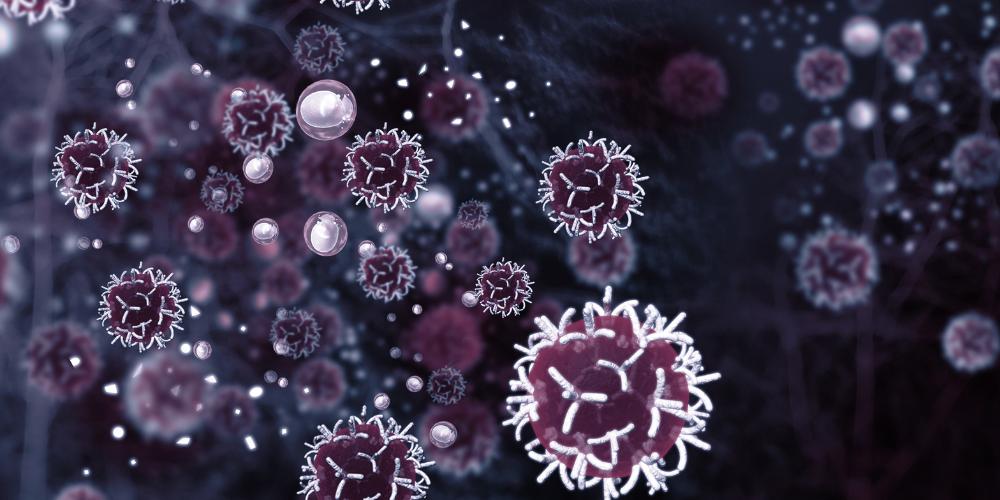Going from R&D to Commercial to Have a Different Impact on Patient Lives
AstraZeneca’s Shubh Goel, VP, Head of Immuno-Oncology and Gastrointestinal (GI) Tumors Franchise, US Oncology Business Unit, uses her role overseeing all sales, marketing and cross-functional team efforts in the US, across AstraZeneca’s IO and GI portfolios to bring forward therapeutics that can offer patients improved chances of survival.

You transferred into commercial roles from R&D. What has kept you on the commercial side?
I loved the opportunity to see research come to life in the form of medicines that can really help patients and their outcomes. My role helps to connect those dots. When you’re working on the science side, you don’t usually get to hear about the impact you’re making directly from the patient. You don’t get to see the physicians tell their stories about how they’ve been able to apply these medicines in situations where they didn’t have any options before. When you work on the commercial side, you have that opportunity.
How do the continued advancements in IO change your commercial work?
Because we’re seeing data for the first time ever with landmark survival at 3, 4, 5 years, etc, it requires a mindset shift in terms of how we incorporate those newer milestones and communicate them for physician decision-making. Physicians have routinely looked at data in terms of medians and a snapshot in time, and that is changing. Patients want to know if they’ll be able to attend that next important milestone - weddings, graduations, etc. Data from IO therapies are starting to expand the hope for patients to be present at the milestones they really care about.
"When you’re working on the science side, you don’t usually get to hear about the impact you’re making directly from the patient. When you work on the commercial side, you have that opportunity."
What does innovation look like in the commercial perspective?
Right now, it’s about how we can bring new technologies in, and encourage thinking differently. We have to be careful not to get stuck in doing things because that’s how they’ve always been done. There is technology that can help us better communicate to and reach our customers. For example, AI is helping to better define communication, determine where patients are and which patients would benefit most from our therapies. We’re also incorporating digital technologies to help us better reach physicians.
What modalities or pathways are you interested in for greater patient benefit?
I’m really interested in bispecifics because the promise of the bispecific is maximizing the ability to deliver dual targets, incorporating two modalities in one therapy. In late 2022, we launched a novel combination regimen with two of our IO agents ªPD-1 and CTLA-4), and last year we shared survival data at four years in first-line HCC, seen for the first time in this setting.
I’m excited to see what bispecifics can do to simplify future combinations into one therapy, enabling expansion of the potential of combinations. If you have one agent with two modalities in it, can you combine it with something else and actually remove chemotherapy altogether, or reduce a combination regimen of four infusions down to two? The potential is that we finally get to a place of great outcomes in terms of efficacy without chemotherapy’s toxicities. I’m really motivated by that, and we’re beginning to see the portfolios that could potentially achieve that.
What becomes possible next if the work you’re doing now is successful?
I think of this across a few different areas. First, if we’re successful in bringing IO-based therapies into new settings across a wide range of tumors, we'll be helping more patients who currently have a number of medical needs or a poor prognosis today.
Second, if we’re successful in using IO treatments in earlier stages of disease, we’ll be closer to a potential cure. The earlier you go, the more of a difference you can make.
Third, if we’re successful with novel combinations, we have the potential to reduce the burden of toxicities for patients, and improve the quality of that longer term survival.
And last but not least, we envisage a future where all patients have rapid and equitable access to screening diagnosis and optimal care.
"I’m excited to see what bispecifics can do to simplify future combinations into one therapy, enabling expansion of the potential of combinations. The potential is that we finally get to a place of great outcomes in terms of efficacy without chemotherapy’s toxicities."
What are the North Stars in your work to advance patient outcomes?
First is moving earlier into the treatment paradigm to have a better chance of driving improvement in those longer-term outcomes. Second is delivering options to all patients, with a focus on equity when it comes to clinical trials and access to medicines. Third is improving the quality of those outcomes by reducing the burden of toxicities that patients often have to go through with chemotherapy.
What advice do you have for young women entering science careers?
Don't be afraid to take the bold leap. A mentor once told me early on in my career that you should always be on a growth curve. If you find yourself reaching a plateau, it’s probably time for a new challenge, especially one that feels a bit scary at first.
I would also add, don’t be afraid to ask questions. I learned this moving from the R&D side to commercial. When you meet people, ask about their roles. Ask for feedback as to how you’re doing. Ask what the expectations are. I think people think that leaders at a certain level are too busy to answer questions, but really we’re very excited when people ask us things. Helping other people is the best time we can spend.
And maybe most importantly, follow your passion. We spend a lot of our lives at work with our peers. It's important to find the thing that makes us excited to get up in the morning.
What drives your passion for your work?
Passion for the patient, connection to the innovative science that oncology immunotherapies bring and the opportunity to build high-performing teams. I’ve had this passion since my first-ever role in oncology 20 years ago. I heard firsthand from a patient who had been on a clinical trial for a developmental therapeutic I wasn’t even working on at the time. But it changed my life to hear about how the therapy impacted her prognosis, and the fact that she was standing in front of us many months after diagnosis, which she wasn’t expecting to be able to do. I have never forgotten this moment.
What are you looking forward to in the IO space for 2024?
I'm hopeful that we continue to see this evolution of the mechanisms coming to the forefront, to get closer to improved long-term outcomes.
For AstraZeneca in particular, at ESMO 2023 we presented the three bispecifics in our immuno-oncology pipeline. I will be excited to see the continued development of those agents.
Do you have any book recommendations?
One is "My Life in Full," by Indra Nooyi because I could relate to aspects of her journey as a woman of color in a leadership position.
Second is the television show "Ted Lasso." I’ve actually found memorable and surprising leadership lessons from the show. I feel like there are leadership lessons to be found in simple places.










